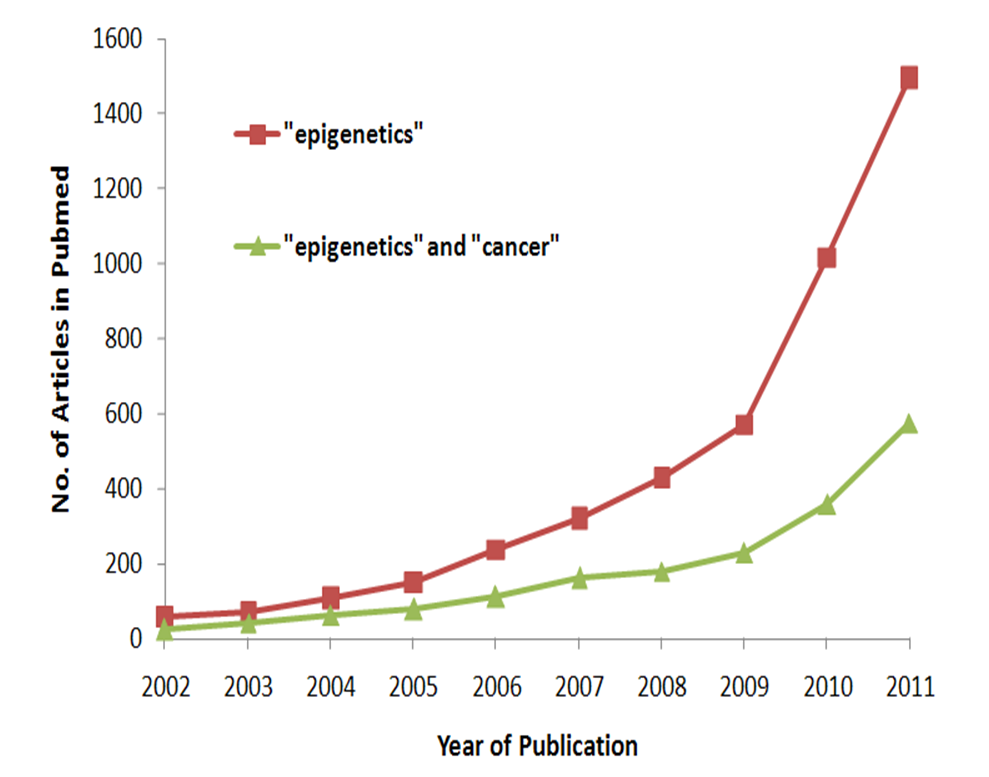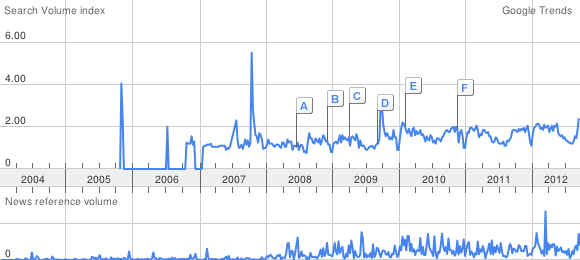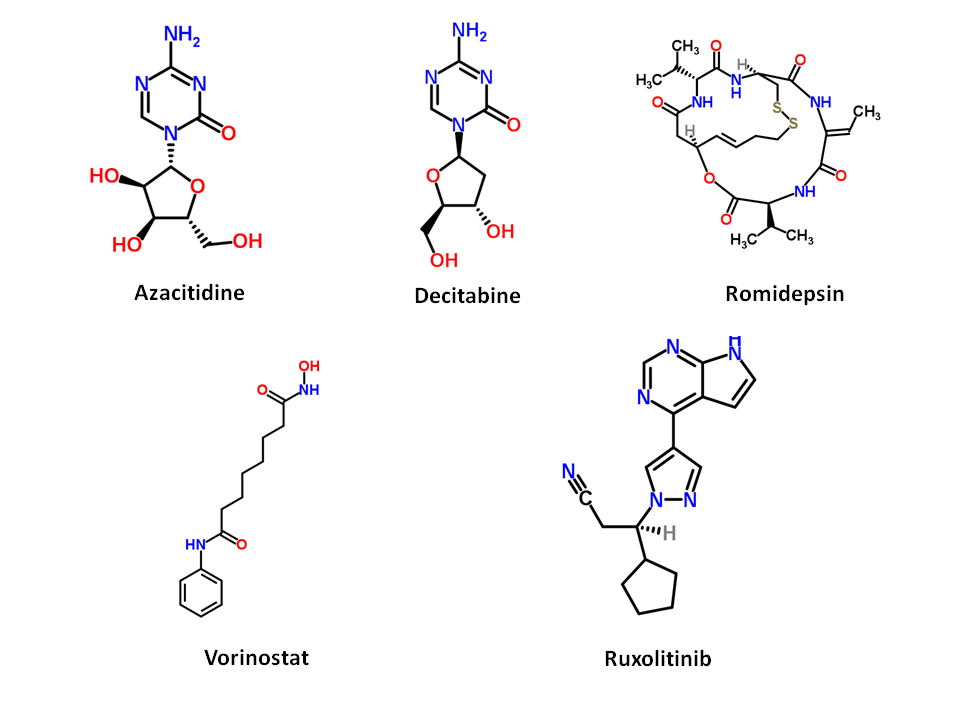The term ‘‘epigenetics’’ (literally means 'above the genes') was originally coined by
Conrad Waddington in the 1940s to explain phenotypes produced due to interaction of genes with the environment without any alteration in the DNA sequence. Full understanding of epigenetics
is yet to be reached and hence, many definitions continue to exist. Epigenetics is most commonly defined as the study of heritable changes in gene expression or phenotype without rewriting genetic code. Epigenetic changes has been implicated in many diseases including cancer.
Research growth

Figure 1 : Graph showing growth of literature on epigenetics and cancer epigenetics. Search terms "epigenetics", "epigenetics" and "cancer" were used to find the number
of articles in Pubmed.

Figure 2 : Search volume as per Google Trends for the term "epigenetics"
Epigenetic mechanisms
Epigenetic events regulate the activities of genes without changing the DNA.
Gene expression depends on the methyl-marks attached to DNA and/or composition of chromatin. The main components of chromatin are histones around which 146 base-pairs of DNA are wound like a thread around a spool, forming a structure called nucleosome.
There are various epigenetic mechanisms that can affect the nucleosome :
1. DNA methylation
2. Histone modifications
3. Role of microRNAs
4. Chromatin remodeling

Figure 3 : Illustration showing how epigenetic mechanisms can impact health.
Source :
http://commonfund.nih.gov/epigenomics/epigeneticmechanisms.aspx
Epigenetics and Cancer
17 cancers linked to 20 genetic switches as per ENCODE project findings.
DNA methylation was the first epigenetic process to be linked with cancer. It regulates gene expression by hypermethylation, hypomethylation and loss of imprinting.







